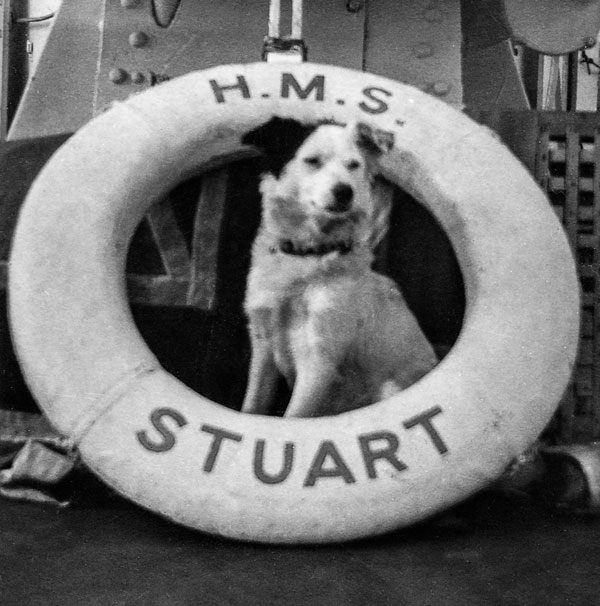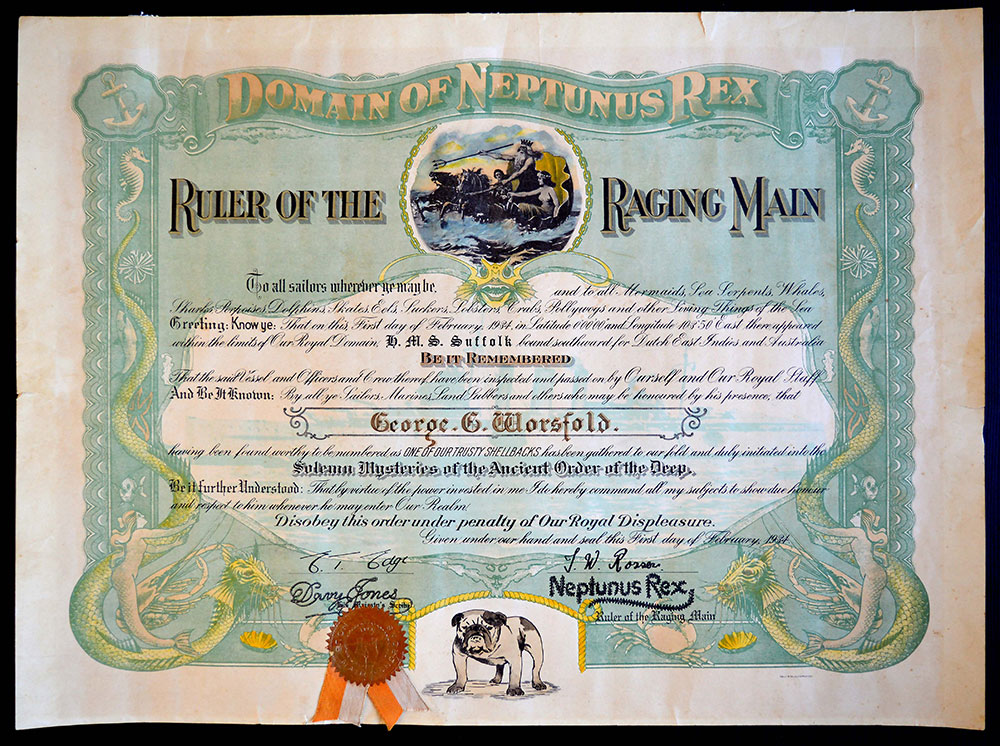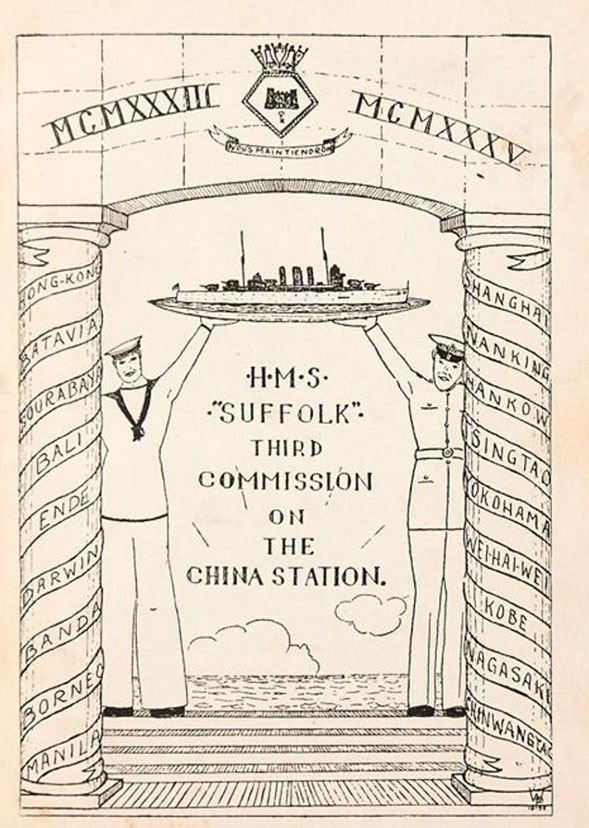
 HMS STUART
HMS STUART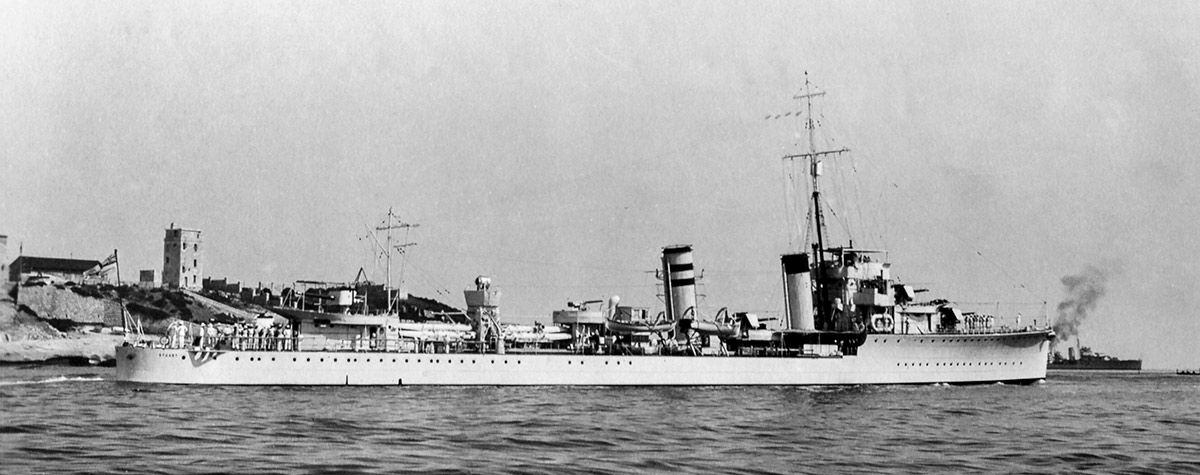
Commanding Officers
With acknowledgment to the Dreadnought Project
| Cdr Lewis G. E. Crabbe (Nov 1918 - Jan 1919) Capt William S. Leveson-Gower (Jan 1919 – 5 Jan 1921) Capt Charles A. Fremantle (1 Jan 1921 - Sept 1922) Capt Humphrey T. Walwyn (1 Oct 1922 – October, 1923) Capt Dashwood F. Moir (20 Oc 1923 – Nov 1924) Killed, 1942 Capt Eric G. Robinson (Nov 924 – 30 May, 1925) (and as Captain (D) of Second Destroyer Flotilla) Capt George H. D'O. Lyon (11 May, 1925 – 7 May, 1927) |
Capt Montague G. B. Legge (2 May, 1927 – 19 Dec, 1928) Capt William J. Whitworth (9 Dec 1928 – Feb 1931) Capt Alfred H. Taylor (5 July, 1931 – 12 May, 1932) Cdr Edward M. C. Barraclough (6 May, 1932 – 9 July, 1932) Capt Ronald W. Blacklock (9 July, 1932 – 15 Nov 1932) Capt Philip E. Phillips (5 Nov 1932 – 12 Dec 1934) Capt Austen G. Lilley (11 Oct 1933, ship is now HMAS Stuart) Also CO of: HMS Venturous, Wanderer, Woolston, Vanquisher, Windsor and Watchman |
From 1919 - 21
|
|
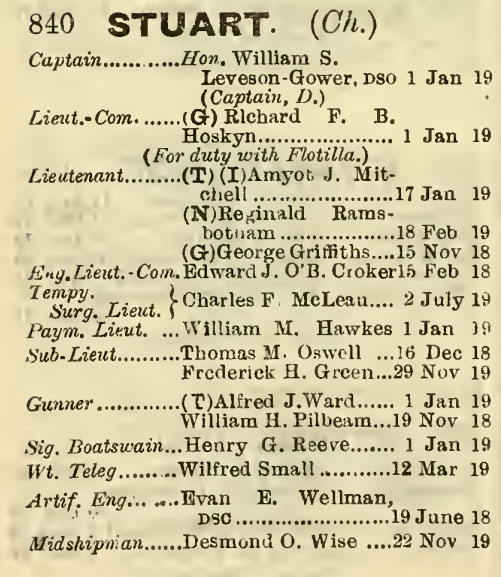 Navy List January 1920 | 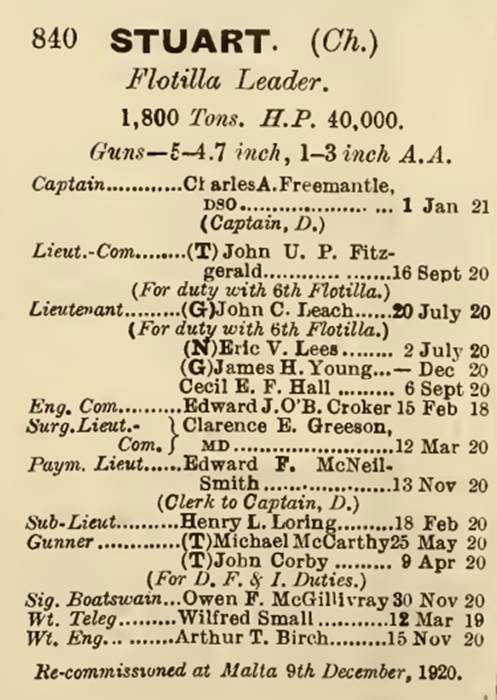 Navy List January 1921 |
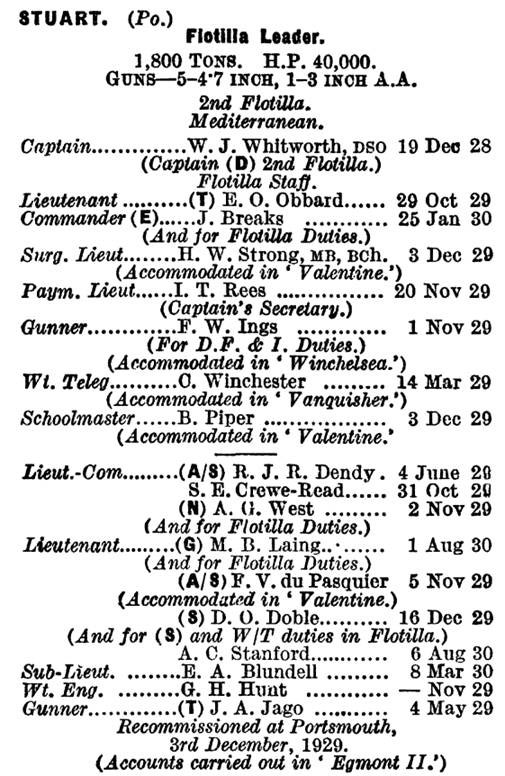 Navy List October 1930
|
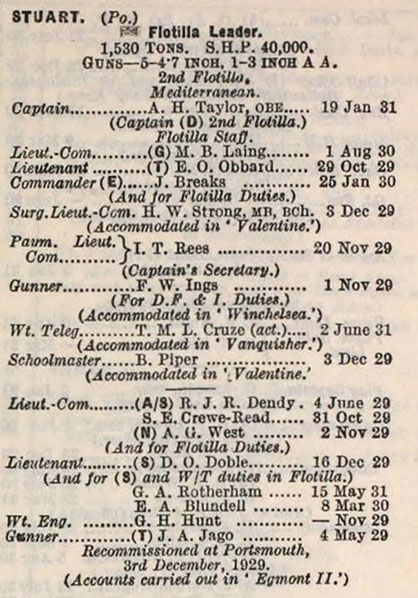 Navy List July 1931 |
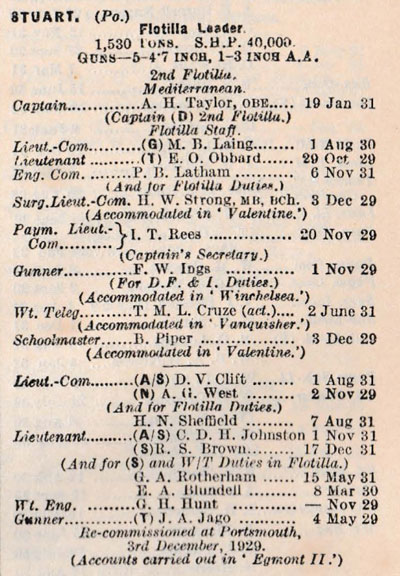 Navy List February 1932 |
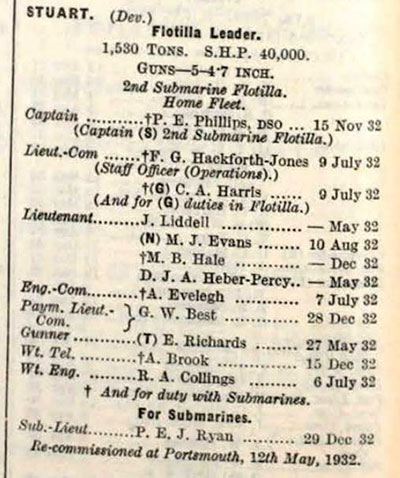 Navy List January 1933 |
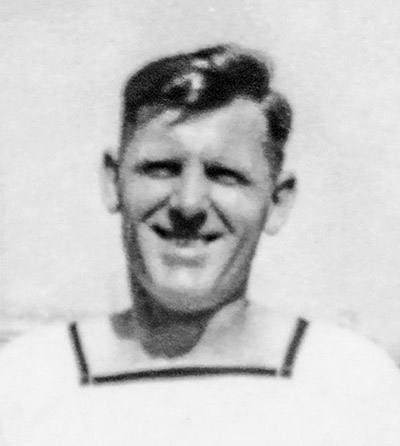
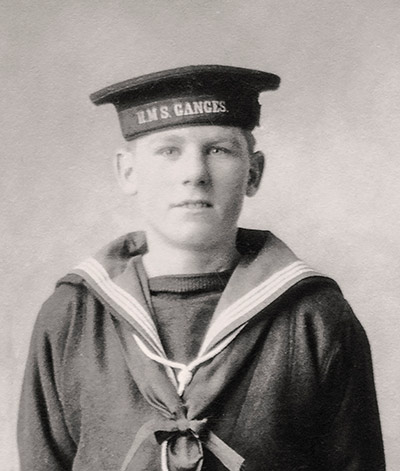 George
Gale Worsfold was born in the affluent village of Claygate in Surrey,
three miles south of Thames Ditton, across the Thames from Hampton
Court Palace. He was one of five children, the second son of Nicholas
Worsfold and Mary Worsfold (nee Gale). His father served in the Army
during the Great War but his two oldest sons joined the Royal Navy as
boy sailors, Nicholas Ayling Worsfold, born in 1904 joined in
1920 and signed on for 12 years when he was eighteen. George was born
in 1910 and photographed during training at HMS Ganges (on the left) when he was sixteen, signed on for 12 years on 9 October 1928.
George
Gale Worsfold was born in the affluent village of Claygate in Surrey,
three miles south of Thames Ditton, across the Thames from Hampton
Court Palace. He was one of five children, the second son of Nicholas
Worsfold and Mary Worsfold (nee Gale). His father served in the Army
during the Great War but his two oldest sons joined the Royal Navy as
boy sailors, Nicholas Ayling Worsfold, born in 1904 joined in
1920 and signed on for 12 years when he was eighteen. George was born
in 1910 and photographed during training at HMS Ganges (on the left) when he was sixteen, signed on for 12 years on 9 October 1928. 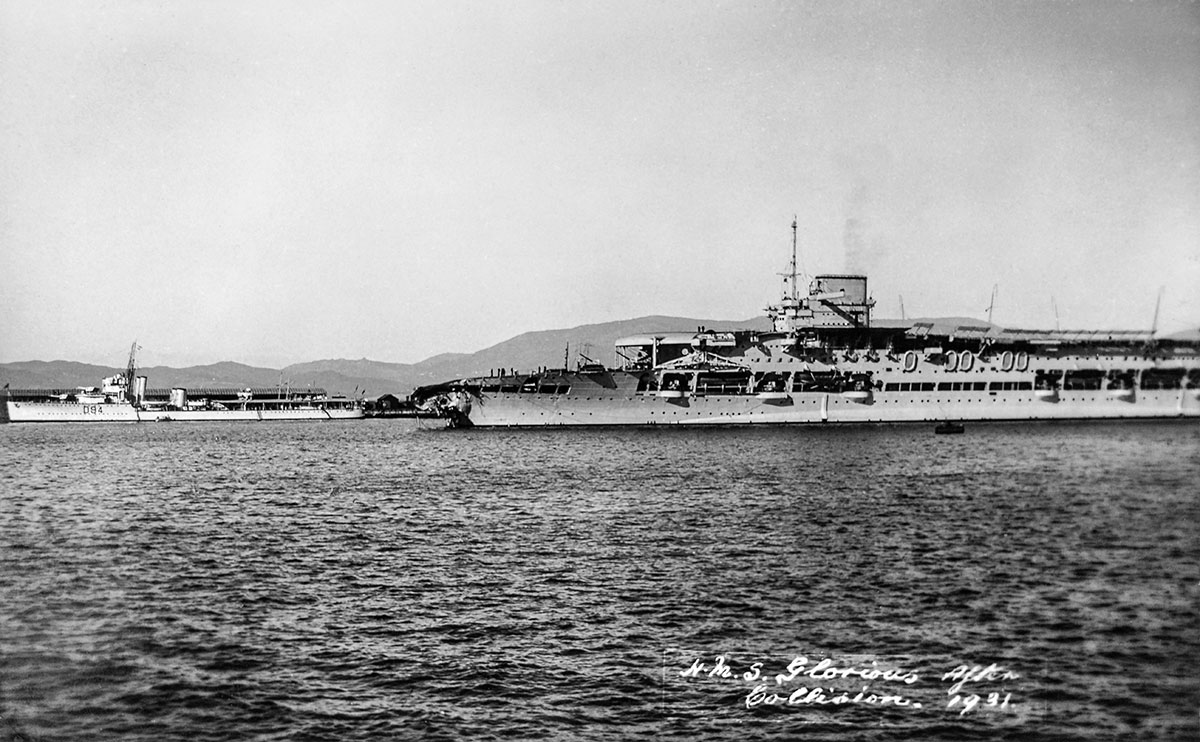
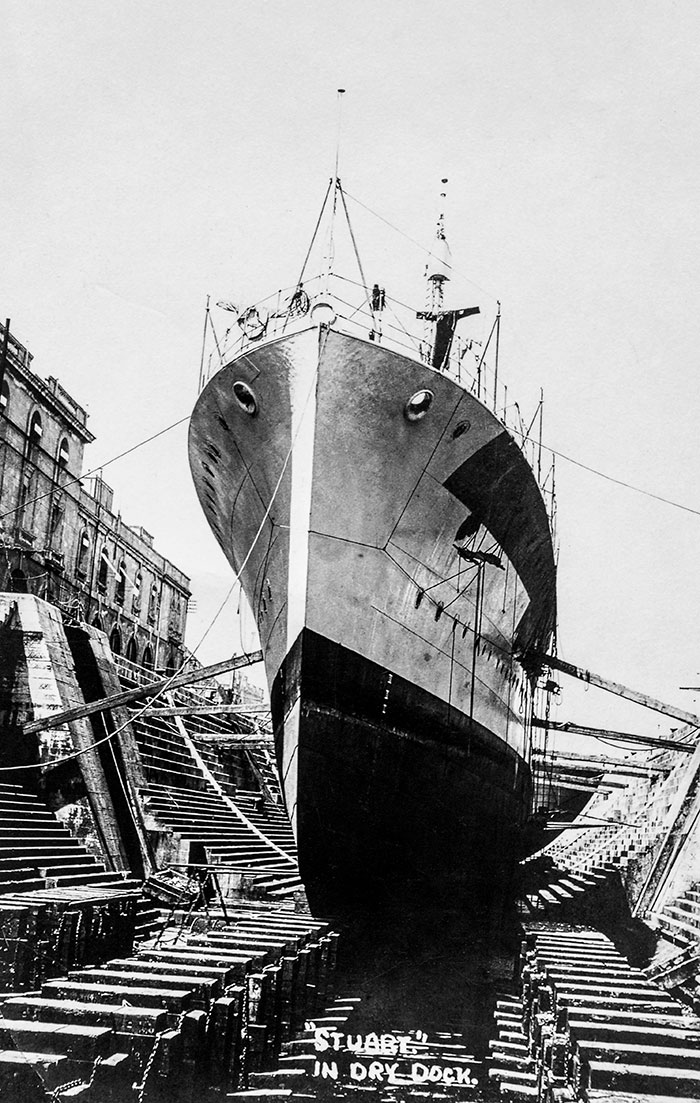 |
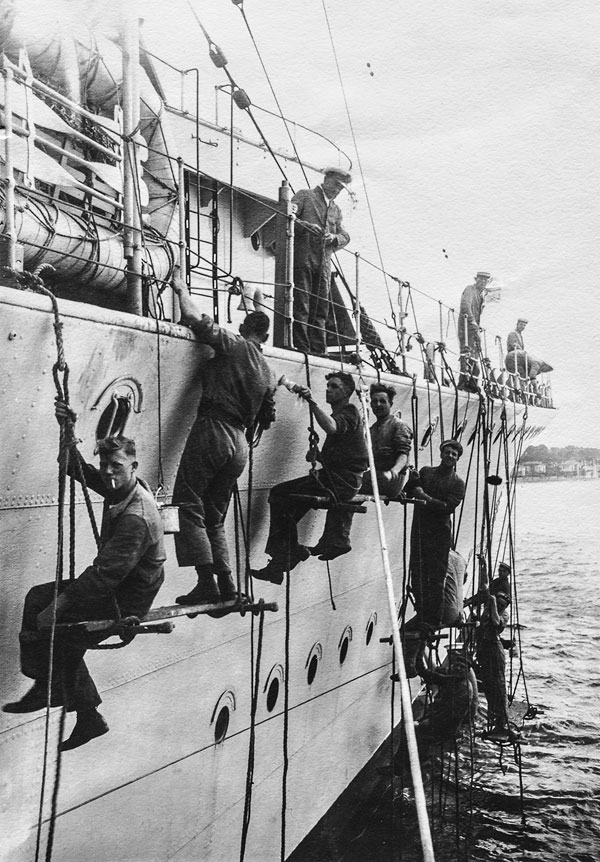 |
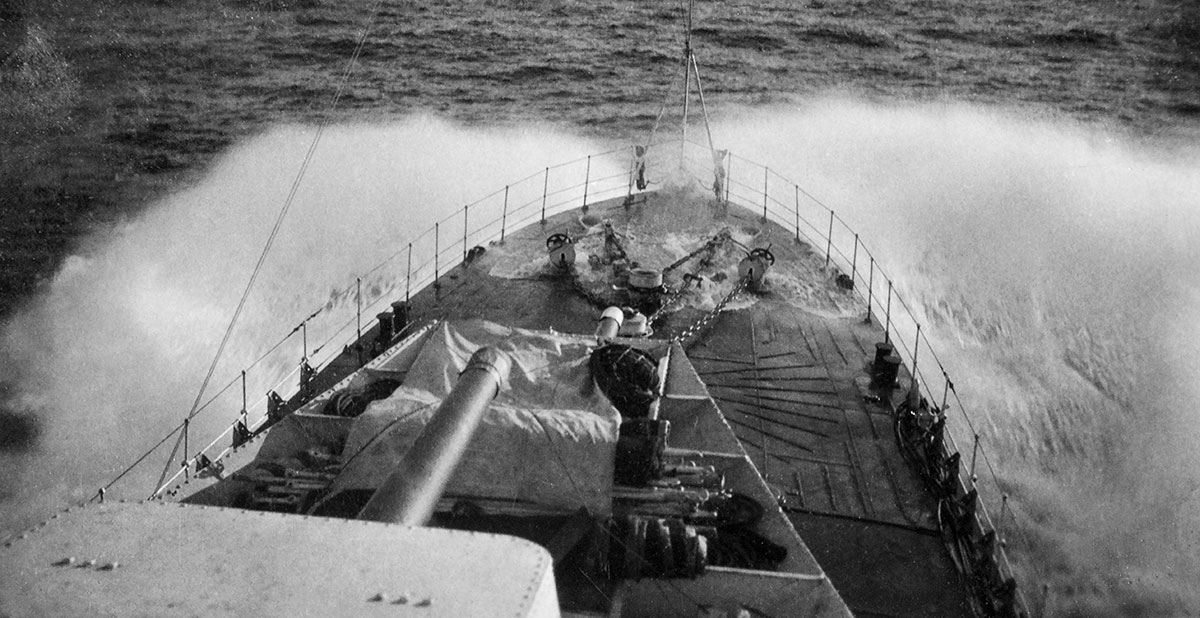
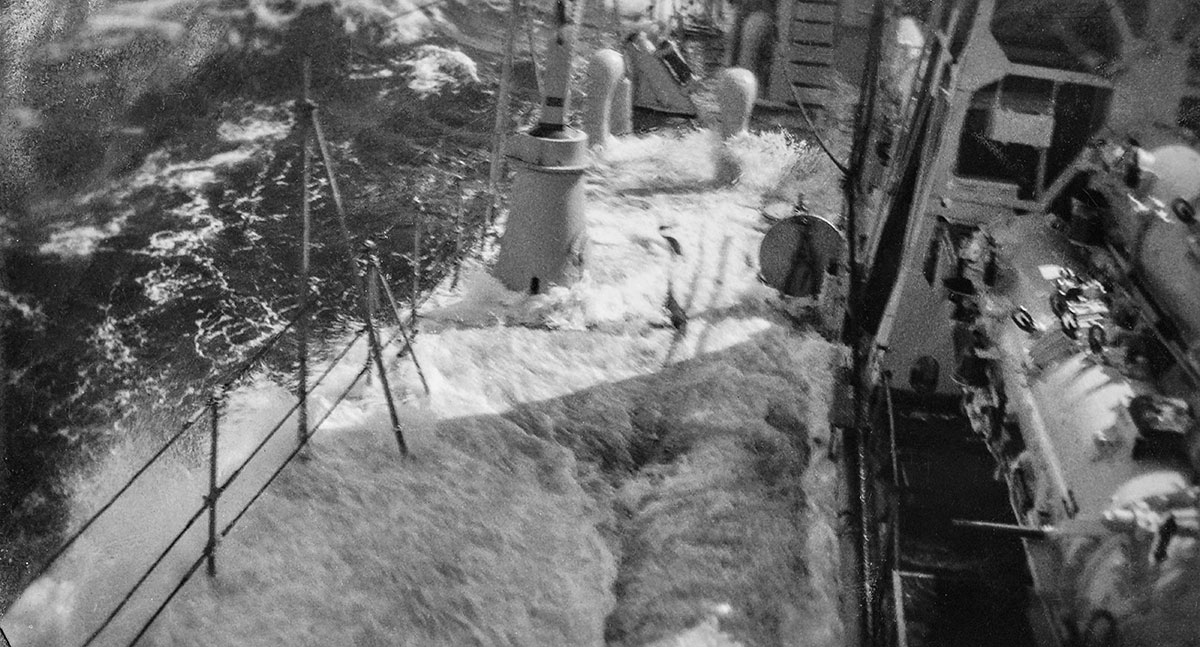
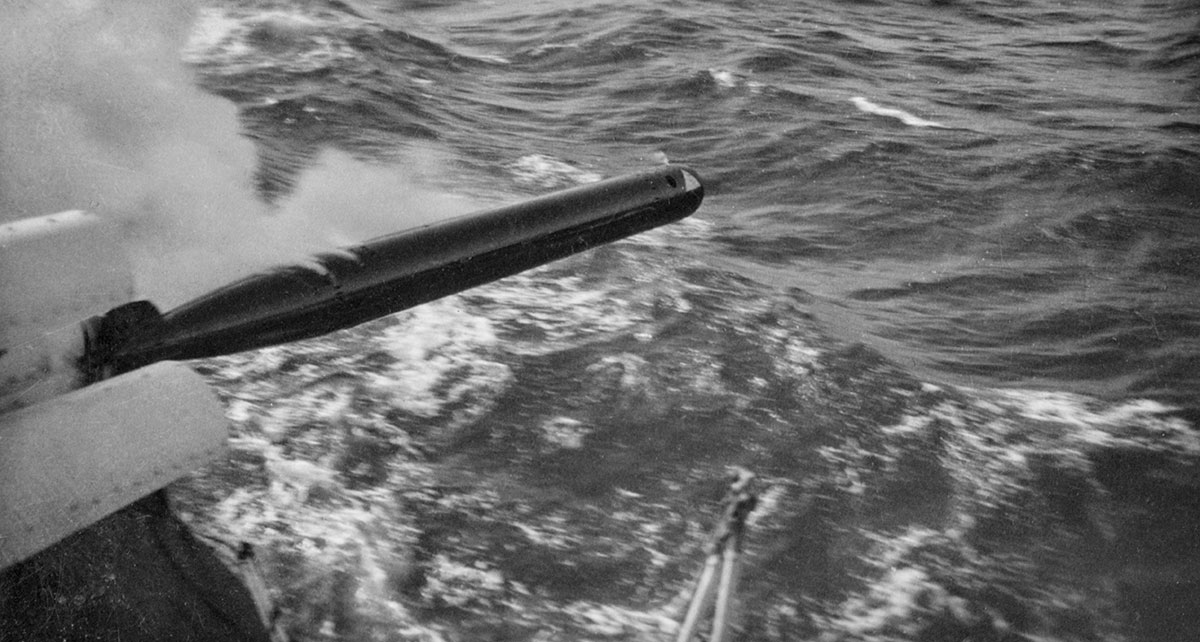
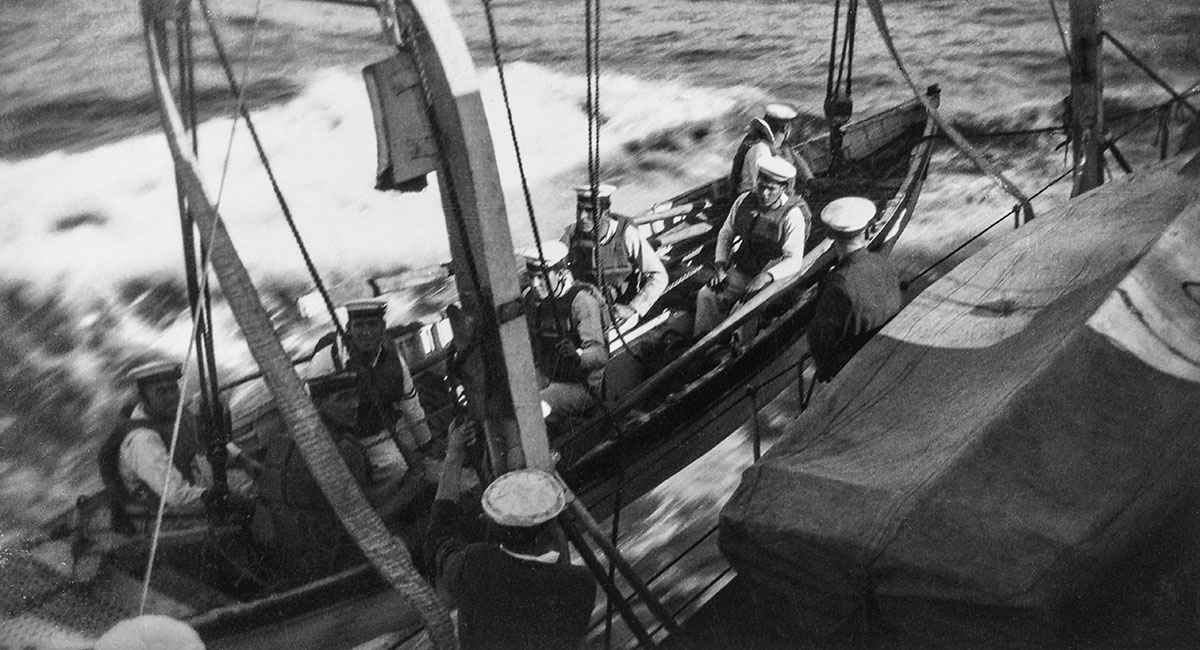
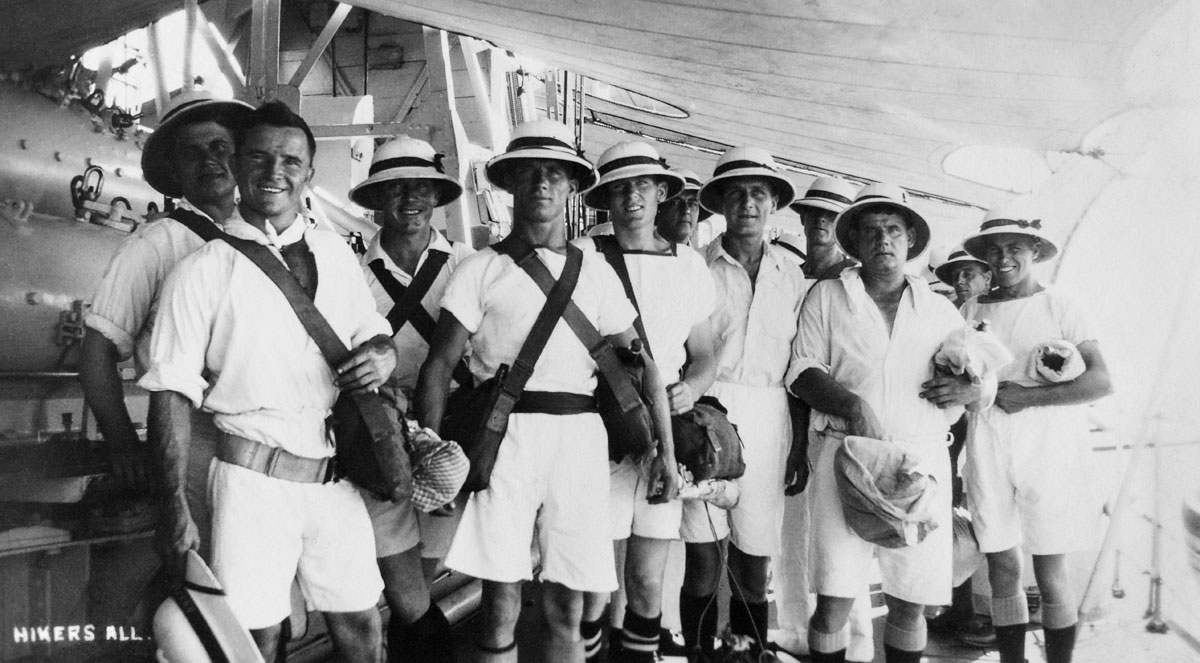
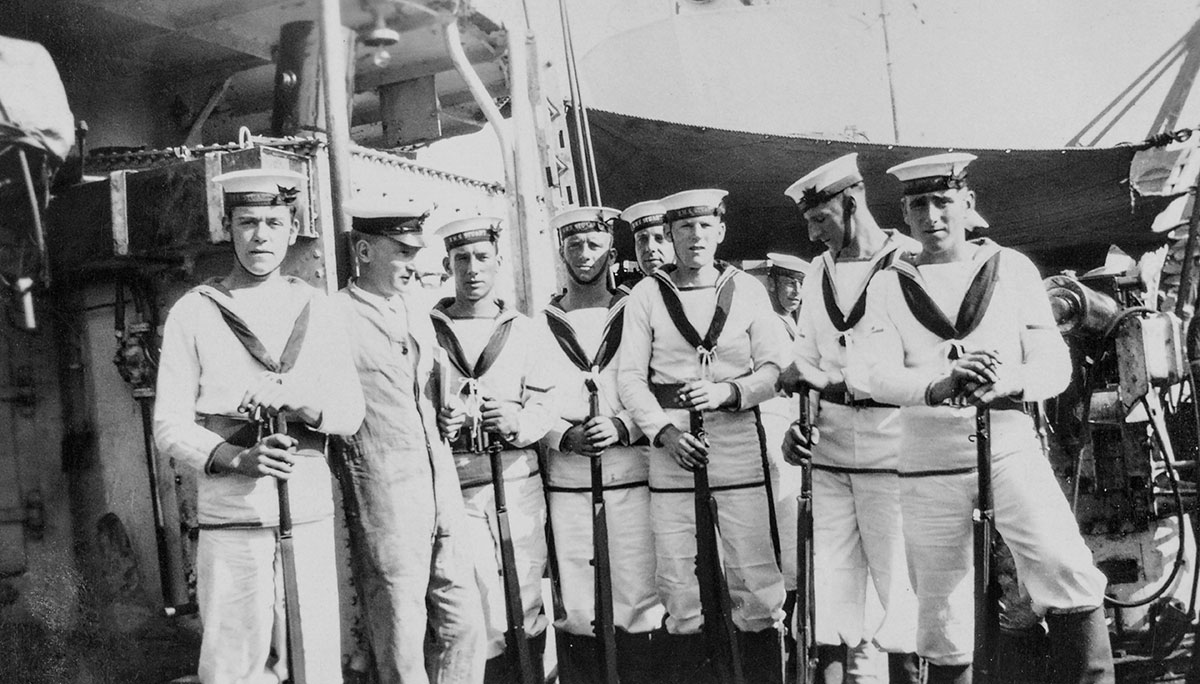
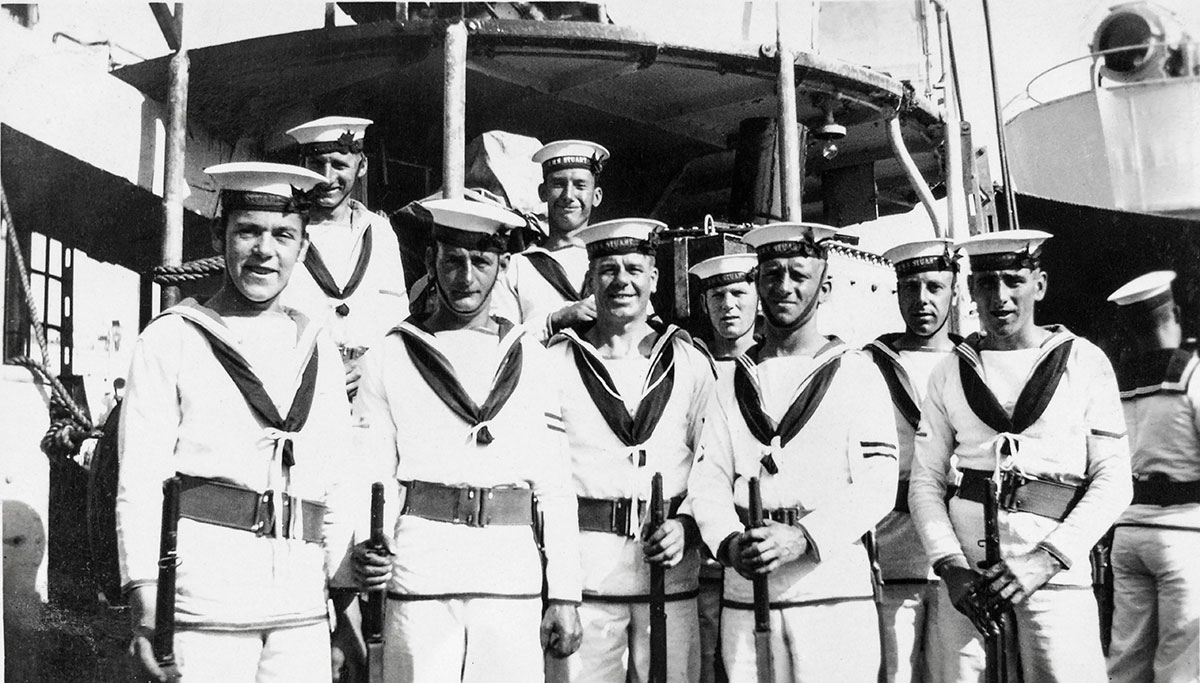
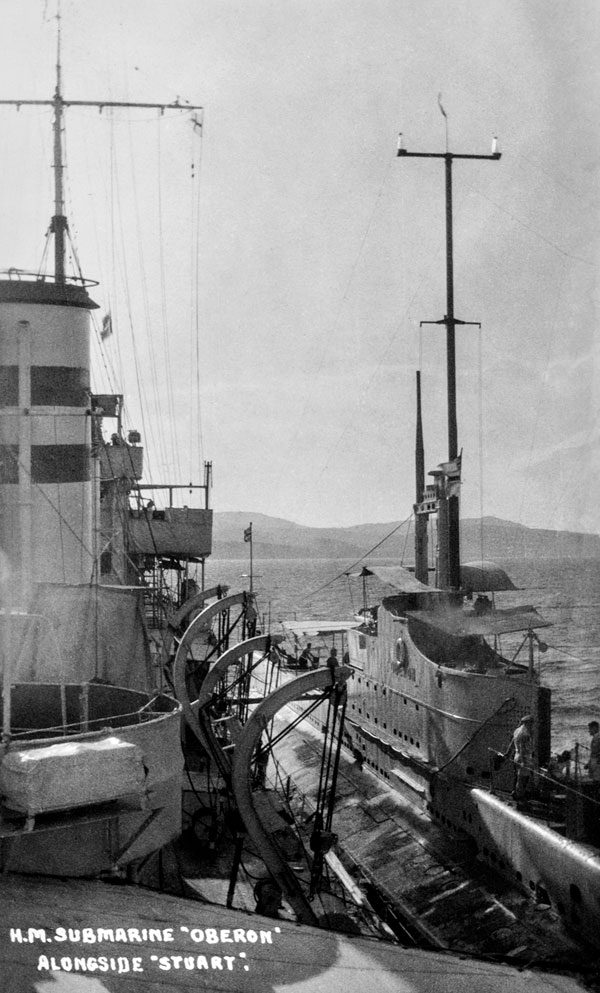 HMS Oberon was the prototype for the Odin Class of Submarines |
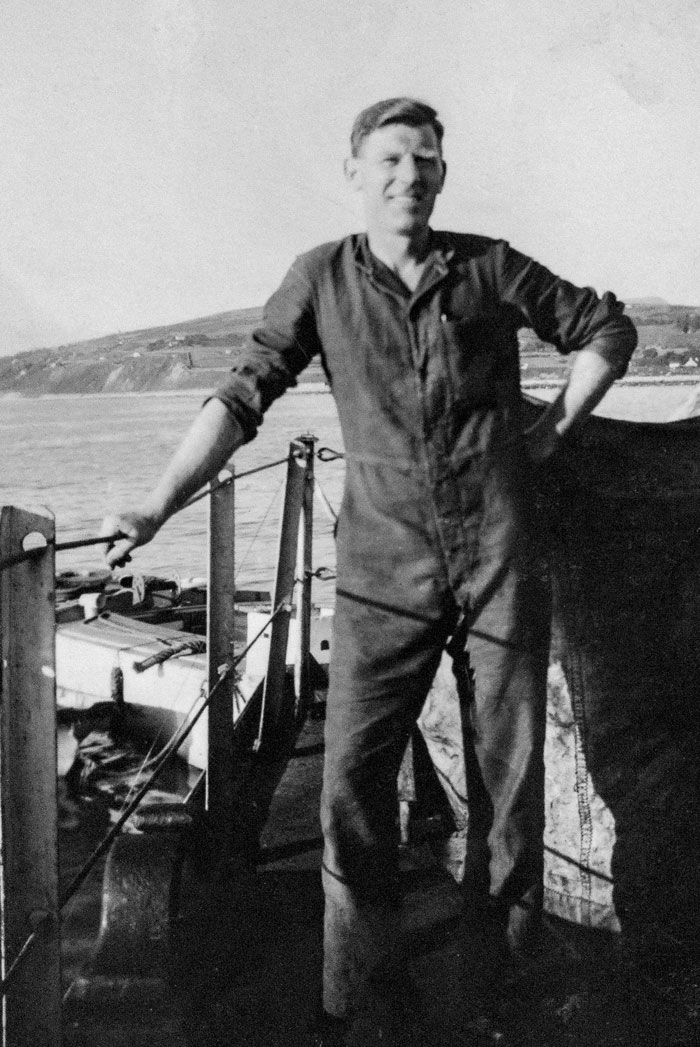 George G Worsfold in dungarees on deck of HMS Stuart |
